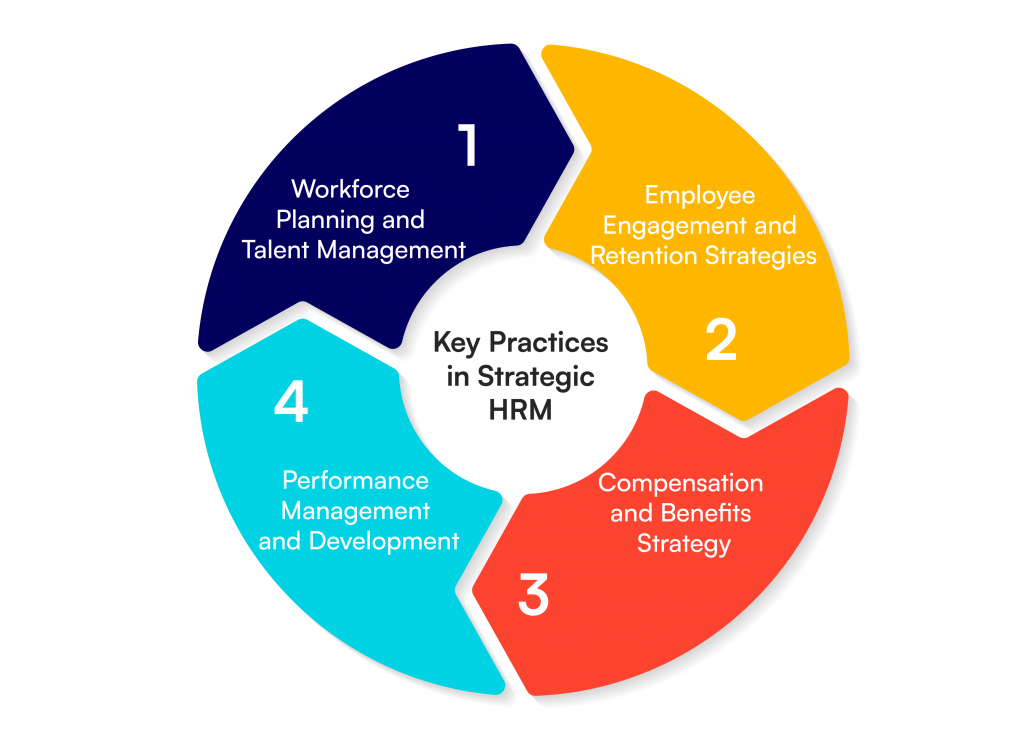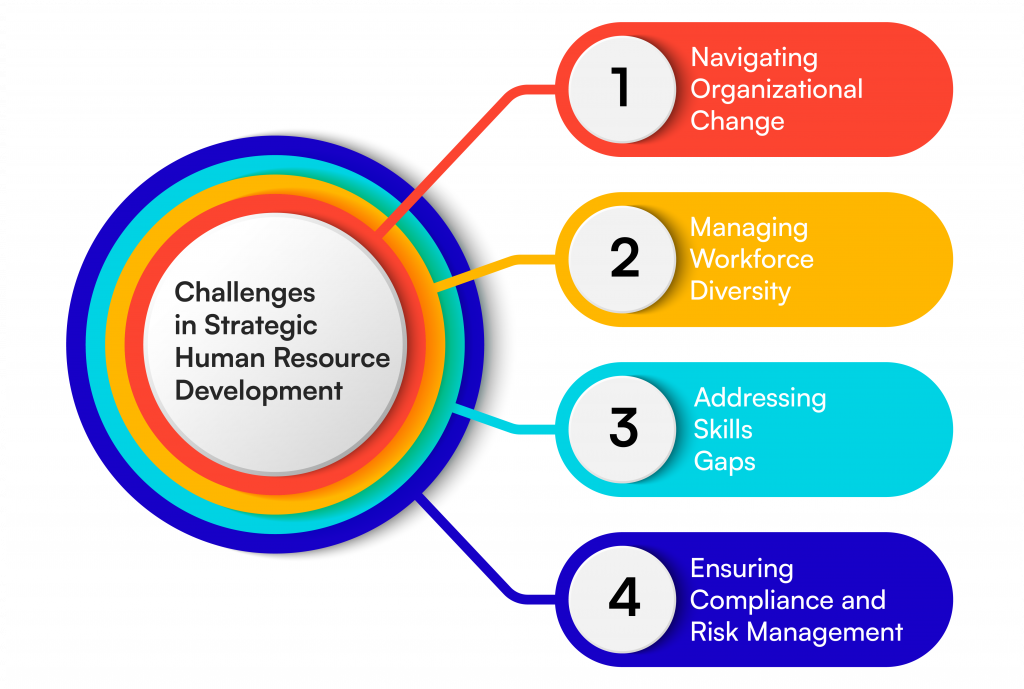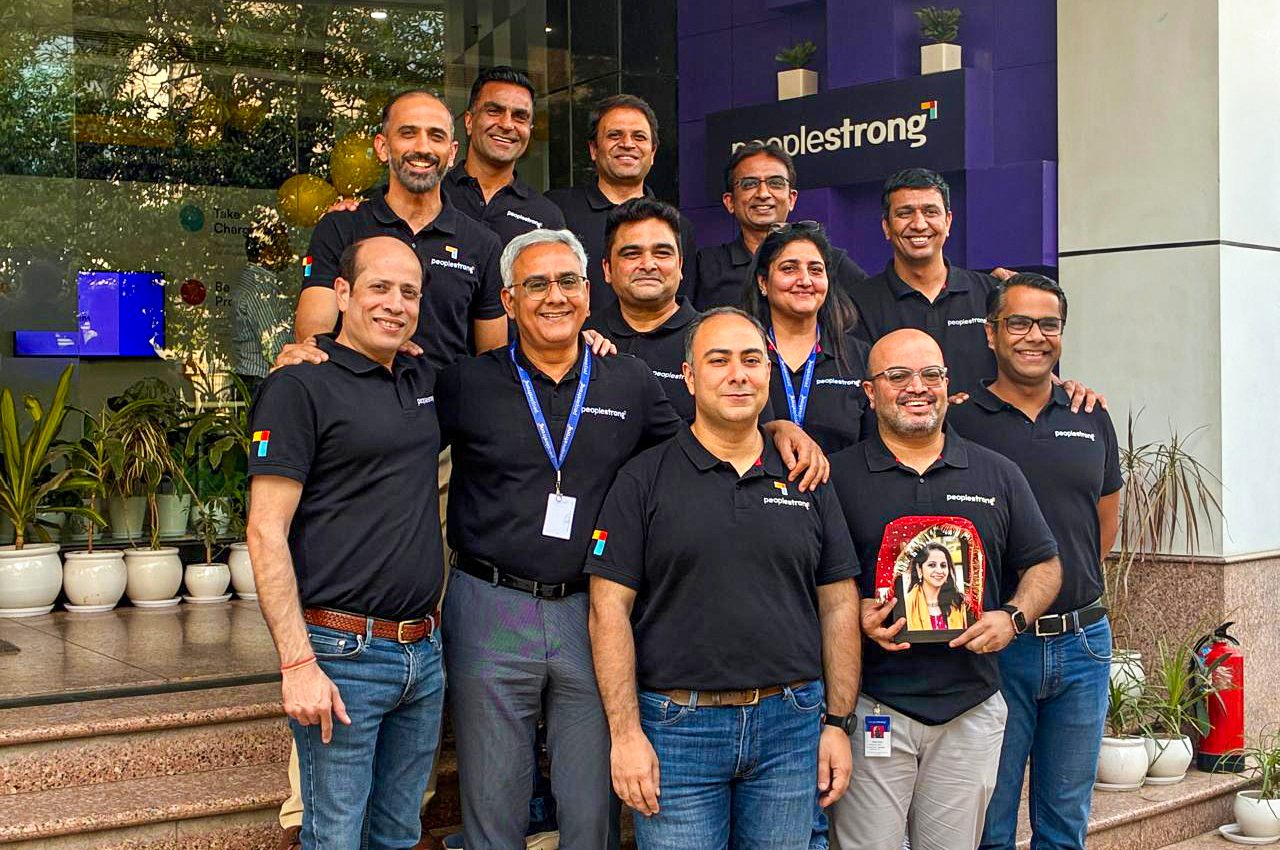Strategic Human Resource Management (SHRM) is a forward-thinking approach that aligns HR with an organization’s long-term goals. Unlike traditional HR, which handles daily administrative tasks, SHRM focuses on preparing the workforce to meet current needs while driving future success.
The shift from traditional HR to SHRM marks a significant change in how organizations view their human resources—from an administrative function to a strategic partner.
Understanding SHRM’s importance and its role in aligning HR strategies with business goals is key to driving organizational success.
Aligning HR Strategy with Business Goals
Aligning HR strategy with business goals is essential for driving success. When HR strategies mirror company objectives, human capital becomes a key driver of outcomes, transforming HR into a strategic partner.
To achieve this, HR must turn business goals into actionable steps. For example, recruiting creative talent and rewarding innovation helps a company focused on growth. Similarly, expanding into new markets requires building a regional talent pipeline and preparing leaders for global roles.
Examples like Sainsbury’s and Hilton Worldwide show how aligning HR strategies—through tailored training and workforce engagement—boost customer satisfaction and business growth.
This alignment is an ongoing process, requiring regular feedback and adjustments as business goals evolve. By staying adaptable, HR ensures it continues to support the company’s broader objectives and maintains a competitive edge.
Key Practices in Strategic HRM

Here are the key practices in Strategic Human Resource Management (SHRM).
1. Fostering a Performance-Oriented Culture
Creating a culture where performance is prioritized involves setting clear goals, offering regular feedback, and developing incentive programs. A focus on performance can help employees stay motivated, engaged, and aligned with the company’s mission. By recognizing and rewarding accomplishments, organizations encourage continuous growth and higher productivity.
2. Investing in Talent Development
Companies should commit to the ongoing growth of their employees by offering training programs, career development opportunities, and mentorship. This commitment helps ensure the workforce stays skilled and adaptable to future challenges. By nurturing talent, organizations can maintain a competitive edge and retain top performers.
3. Embracing Technology and Automation
Leveraging HR technology, such as Human Resource Management Systems (HRMS), streamlines essential processes like payroll, recruitment, and data management. HR Automation boosts efficiency, reduces errors, and frees HR professionals to focus on strategic initiatives. Integrating technology also enhances decision-making through data-driven insights.
📜 Suggested Read: Boost Efficiency and Accuracy with HR Automation: A Step-by-Step Guide
4. Promoting Diversity and Inclusion
Building an inclusive workforce goes beyond recruitment. Organizations must create policies that encourage diverse hiring practices and foster an environment where different backgrounds and perspectives are valued. Promoting diversity leads to innovation, employee satisfaction, and better overall performance by encouraging collaboration among a varied talent pool.
5. Succession Planning
Preparing for the future by identifying and developing internal talent ensures that key roles can be filled quickly and effectively when needed. Succession planning ensures leadership continuity by identifying and developing internal talent for key roles.
It focuses on preparing high-potential employees to step into critical positions when needed, reducing the disruption caused by retirements, promotions, or unexpected departures. The process includes talent evaluation, mentoring, job rotation, and specialized training to build the skills needed for future leadership.
Succession planning not only strengthens leadership pipelines but also boosts employee morale by offering clear growth opportunities. It reduces recruitment costs and ensures smooth transitions, making it a vital part of long-term organizational strategy.
6. Employee Engagement Initiatives
Actively fostering employee engagement through initiatives like regular feedback, recognition programs, and opportunities for collaboration helps build a stronger connection between employees and the organization. Engaged employees are more likely to be productive, motivated, and committed to their roles, leading to improved overall performance.
The Role of Technology in Strategic HRM
Technology has become an essential part of strategic human resource management (SHRM). No longer just a tool for managing payroll or attendance, it plays a much broader role in shaping how businesses engage, develop, and retain talent.
The integration of AI, automation, and data-driven tools allows HR departments to focus more on employee growth, satisfaction, and long-term company goals rather than getting bogged down in administrative tasks.
One major shift technology has brought is efficiency in decision-making and recruitment. AI-powered tools now assist HR professionals in crafting detailed job descriptions, automating hiring processes, and even generating intelligent questions for interview panels.
Beyond recruitment, technology also plays a crucial role in employee engagement through AI-driven performance tracking, personalized mentoring, and data analytics that align employee goals with organizational success. This means that SHRM has evolved from reactive management to proactive talent development and strategic alignment, with technology being the driving force.
A Glimpse into PeopleStrong’s Gen-AI and HR Chatbots
PeopleStrong’s Gen-AI and HR chatbots take this technological leap even further. Their AI-powered solutions streamline every HR function, from drafting job-specific insights within minutes to creating personalized mentoring programs for new hires.
With features like Jinie, an AI-powered talent coach, HR departments can offer 24/7 support, personalized guidance, and continuous engagement with employees. Whether it’s preparing interview panelists with AI-generated questions or crafting intelligent OKRs, PeopleStrong’s technology provides a human-like touch while boosting productivity and engagement across the board.
If you’re looking to transform your HR strategy with technology, platforms like PeopleStrong provide the perfect solution.
Overcoming Challenges in Strategic HRM

1. Navigating Organizational Change
One of the biggest challenges in Strategic Human Resource Management (SHRM) is managing change within an organization. Whether it’s restructuring, mergers, or new technologies, change can disrupt operations and meet resistance.
To manage this, HR must lead in communicating change, addressing concerns, and supporting employees throughout the transition. Proactive strategies, including clear communication and training, are essential for minimizing disruption and maintaining morale.
2. Managing Workforce Diversity
As workplaces grow more diverse, HR must address challenges like cultural misunderstandings and biases. Implementing inclusive policies, diversity training, and clear anti-discrimination measures are crucial for fostering a culture of respect and equity. Embracing diversity enhances creativity, decision-making, and customer service.
3. Addressing Skills Gaps
The rapidly changing business landscape creates skills gaps that can hinder competitiveness. HR must regularly assess workforce skills, identify development needs, and implement upskilling or recruitment strategies. Proactively closing skills gaps ensures the organization remains capable of achieving its goals
4. Ensuring Compliance and Risk Management
Compliance with evolving legal and regulatory requirements is complex but essential. HR must stay updated on regulations, conduct regular audits, and provide employee training on compliance issues. Robust policies and procedures help mitigate risks and protect the organization from legal and reputational harm.
Measuring the Impact of Strategic HRM
Key Performance Indicators (KPIs) for HRM
Measuring the effectiveness of Strategic Human Resource Management (SHRM) is crucial to ensure that HR strategies are driving the desired business outcomes. Key Performance Indicators (KPIs) are essential tools in this process, providing quantifiable metrics that reflect the performance and impact of HR activities.
Common KPIs in SHRM include
- Employee engagement score
- Employee turnover rates
- Time-to-hire
- Employee engagement scores
- Training effectiveness
- Absenteeism rate
- Internal promotion rate
- Employee productivity
- Employee Net Promoter Score (eNPS)
- Cost Per Hire
These metrics help HR teams monitor progress, identify areas for improvement, and make data-driven decisions that align with the organization’s strategic goals.
Methods for Evaluating HR Strategy Effectiveness
Evaluating the effectiveness of HR strategies involves more than just tracking KPIs; it requires a comprehensive approach that considers both quantitative and qualitative factors.
- Conducting regular HR audits ensures HR policies align with company objectives. Employee feedback surveys offer insights into the effectiveness of HR initiatives and identify areas for improvement.
- Benchmarking against industry standards helps compare the organization’s HR practices with competitors, highlighting strengths and weaknesses. This approach guides strategic improvements, ensuring HR strategies remain effective and adaptable to changing business needs.
The goal is to keep HR practices aligned with broader business goals and responsive to evolving challenges.
Linking HR Metrics to Business Outcomes
To understand SHRM’s impact, it’s crucial to link HR metrics to business outcomes. For instance, higher employee engagement can correlate with increased productivity, customer satisfaction, or revenue.
Demonstrating these connections solidifies HR as a strategic partner and secures leadership buy-in by highlighting the ROI of HR strategies. When HR can show data that directly ties their initiatives to the company’s bottom line, it reinforces the value of SHRM and justifies continued investment in people management.
Future Trends in Strategic HRM
1. The Shift towards Remote and Hybrid Work Models
The future of work is defined by flexibility, with remote and hybrid models becoming standard. Organizations must adapt HR strategies to support a dispersed workforce, requiring new approaches to engagement, performance management, and collaboration.
HR’s role is to create policies and tools that ensure seamless communication and maintain a strong organizational culture, keeping employees productive and connected, regardless of location.
2. The Growing Importance of Employee Well-being
Employee well-being is now a key focus in Strategic HR Management, with a growing emphasis on mental health, work-life balance, and overall wellness.
Future HR strategies must include wellness programs, mental health support, and flexible work arrangements to keep employees healthy, satisfied, and engaged. This holistic approach is vital for attracting and retaining top talent in a competitive job market.
3. The Integration of ESG (Environmental, Social, Governance) Criteria
Environmental, Social, and Governance (ESG) criteria are becoming integral to business strategy, and HR is playing a key role in integrating these values into organizational practices. Future HR strategies will focus on promoting sustainability, diversity, equity, and inclusion (DEI), and ethical governance.
This involves developing policies that align with ESG goals, such as reducing the organization’s carbon footprint, fostering a diverse and inclusive workforce, and ensuring transparent and ethical business practices.
As consumers and employees increasingly prioritize ESG values, organizations that embrace these criteria will be better positioned for long-term success.
4. The Role of Continuous Learning and Development
Continuous learning is vital in Strategic HR Management. Organizations must cultivate a culture of lifelong learning, encouraging employees to upgrade skills and adapt to new challenges.
HR should implement learning and development programs aligned with strategic goals, using technology for personalized, on-demand training. This focus keeps organizations competitive while boosting employee engagement and career satisfaction.
Conclusion
Strategic Human Resource Management (SHRM) is now essential for driving organizational success. By aligning HR strategies with business goals, fostering continuous improvement, and leveraging technology, organizations gain the talent and agility needed to thrive.
With trends like remote work, employee well-being, and ESG criteria shaping the future, HR’s role is evolving. Solutions like PeopleStrong enable organizations to streamline HR processes, boost employee engagement, and stay competitive.
Ready to transform your HR strategy? Discover how PeopleStrong can align your HR practices with business goals and drive success. Connect with our experts now.












